Wee wets
{{start}}
Whilst wee wets have been around since the beginning of fly fishing with artificial ‘lures’ tied from fur and feathers they continue to be relevant today in both running and still water fisheries.
{{end}}

{{+1}}Kate McLaren variant – fuzzel Katie{{-1}}
{{start}}
Seldom, at least in my case, fished alone this fly is a great top dropper or bob fly when lock style fly fishing. I particularly find it useful when yellow winged hoppers or other insects with yellow parts are on the trouts menu. It looks nothing like a hopper of course but I think the little bit of yellow in the tail as well as the movement of the fuzzeled body and the soft front hackle are often enough to trigger a response.{{end}}
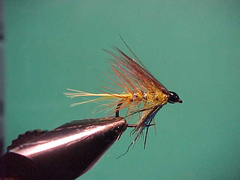
{{+1}}Invicta variant{{-1}}
{{start}}
The original Invicta was created by eminent English fly tier and tackle dealer James Ogden in the 1870's. With just a few tweaks this fly is as relevant today as it was 140 odd years ago. This is a great attractor fly at times when yellow winged hoppers and other insects with yellow body parts are around and yellow is a trigger color for trout.{{end}}

{{+1}}Bloody butcher – Chatto’s variant{{-1}}
{{start}}
Most English wet flies of this type were originally tied as imitations of specific impoundment bait fish or to simply gain the interest of fish and illicit a strike. I have tweaked the original recipe by adding a thorax of claret seals fur. That breaks the harsh lines of the original tie and adds a little bit of extra movement.{{end}}
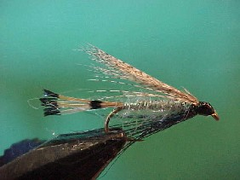
{{+1}}Blue & teal variant{{-1}}
{{start}}
A variant of a old English wet fly this variant is in the same class as an Alexandra this fly as an attractor fly particularly when rainbows are the target. It is different to the original in that the dyed blue hackle has been replaced by blue barbells from the chest feathers of a male peacock and the body is "Glamor" thread fuzzeled with silver UV dubbing.{{end}}
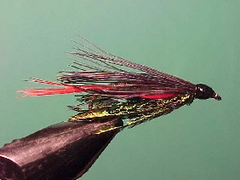
{{+1}}Alexandras – Chatto’s variant{{-1}}
{{start}}
Its a fly that has withstood the test even though it was apparently banned for a time in Scotland where it was developed because it was just too effective. It remains effective today and is an excellent middle dropper attractor type fly or tip fly when fishing for fast moving rainbow trout. My version is tied inverted making it much more stealthy.{{end}}
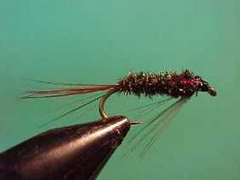
{{+1}}Diawl bach{{-1}}
{{start}}
I normally fish smaller sizes as a midge pupa and from time to time use larger sizes as a point fly in a team of wet flies on a floating or intermediate line. I tie it both with and without weight and find the addition of a small black tungsten bead makes it a handy anchor fly or a good prospecting fly in running water.{{end}}
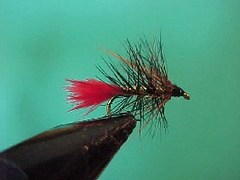
{{+1}}Doobry variants{{-1}}
{{start}}
Although I have never seen a natural of these colours these fly remain useful dropper flies. I lean toward to two red versions when midge are around and the green version works well in waters when midge are around but stick caddis and sand caddis are also on the menu.{{end}}

{{+1}}Blae & black – Chatto’s soft hackle version{{-1}}
{{start}}
The Mallard & Claret was the first for me in this series. Whilst it has been tweaked at the edges a little this Mallard & Claret pattern remains remarkably similar to the original fly pattern that has its origins in England some 500 odd years ago except for the introduction of a fuzzeled body rather than a hackled body and a soft wing instead of feather slip wings.{{end}}

{{+1}}Dunkeld – hackled as in original{{-1}}
{{start}}
It was the summer of 2000 that I first became involved on English style Loch Style fly fishing and slowly I accumulated an arsenal of techniques and flies. I really enjoy tying flies and so as I have seen various patterns I have tied them and tried them. Most have been discarded and just a few have won a place in my Loch Style fly box - this is one of the keepers. Although I have never seen a natural of these colours this fly is one of my top dropper favorite flies.{{end}}
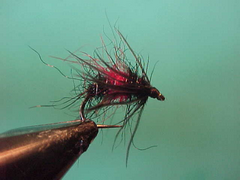
{{+1}}Bibio variant{{-1}}
{{start}}
Whilst the Bibio fly may have been originally designed as a blow fly representation it has found its place as a great top dropper fly in lakes where fish are midge feeders. That of course begs the question do fish take them as midges, or do they take them as some other insect more like a fly, but which spends part of its life cycle in the water, that just happens to hatch as the same time as a midge?{{end}}













